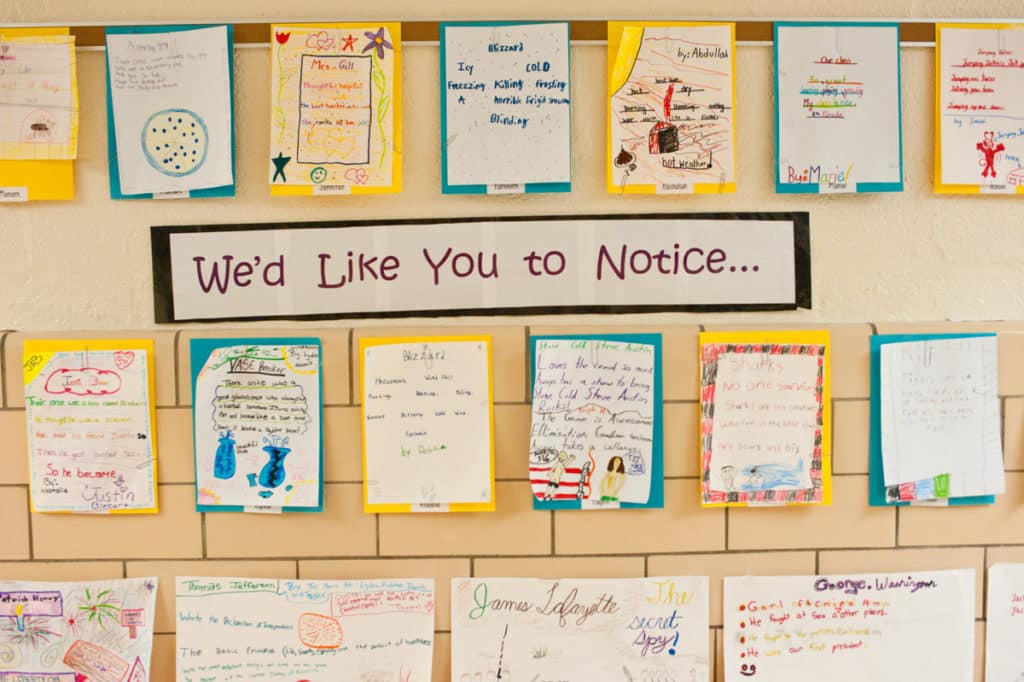
Here are three ways you can use language to encourage positive behavior.
When I comment on children’s work, I try to be very specific. Describing what I notice — “You took your time getting this finished, and it’s extremely neat” or “I remember when writing was a struggle for you. You wrote a lot today!” — helps the children know exactly what made their work successful. Once they’ve experienced hearing my specific comments, I’ll also start asking them questions such as “How do you feel about your work on this today?” That helps children practice self-assessment.
I used to give students general praise such as “Good job!” a lot, but I noticed they were constantly coming to me for praise, asking “What do you think of this, Mrs. V?” and “What about this, is this good?” I wanted them to know for themselves when they’d done a good job and why!
By using specific comments, teachers can be positive and encouraging and help children learn to judge their work for themselves. I realized that my students’ confidence was growing when they started coming to me not to find out if they’d done a good job, but to show me something they thought they’d done particularly well.
I use reminding language a lot. For instance, after I’ve introduced and given the children opportunities to practice a routine such as lining up, at line-up time I’ll say, “Think for a minute about what we do to make lining up go well. Then we’ll share our thoughts.” This gives everyone a chance to recall the expectations, first by thinking and then by hearing what their classmates say. Spending a minute or two doing this is worthwhile. It helps the children complete the task successfully.
Once routines are established, I’ll ask the class to “remind us” or “show us” how we do things whenever they need a refresher. Using reminders this way empowers children because it lets them take responsibility for their behavior. I don’t have to nag, repeat instructions, or tell them what to do. Instead, I prompt them to recall what to do.
Many children have difficulty with transitions and with changes to the classroom routine. Forecasting helps them prepare for change by giving them the information they need to make good choices. Here are some examples:
To ease a transition when students are working intently, a teacher might say: “We have ten minutes to complete this task, and then we’ll switch to math. Think about what you need to do to finish on time.” She might provide additional reminders closer to stopping time.
To help students prepare to shift into cleanup mode: “We will begin cleanup in two minutes. Get ready.” Then the teacher might use an auditory signal such as a chime to announce when cleanup actually begins.
The end of Morning Meeting can be a good time to alert children to changes in routine: “This afternoon, we won’t go to the Media Center. Instead, we’ll have a guest reader.”
Forecasting can also help children prepare for making decisions independently in the future: “What are three things students can do if they finish early?”
Alerting children to what’s coming up lets them practice time management skills, reduces anxiety, and increases their ability to be independent. It’s a key to success in the classroom.
For more on teacher language that encourages positive behavior in students, take a look at The Power of Our Words and Make Learning Meaningful.
Tina Valentine, Carla Gabert, and Melissa Correa-Connolly contributed to this article.